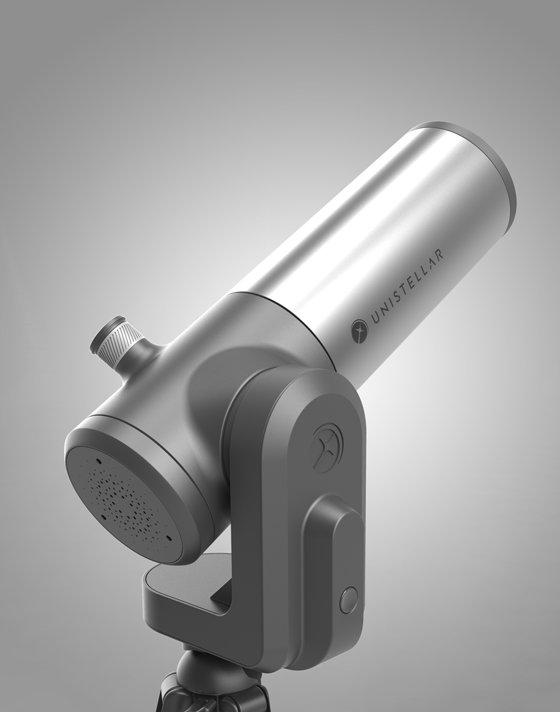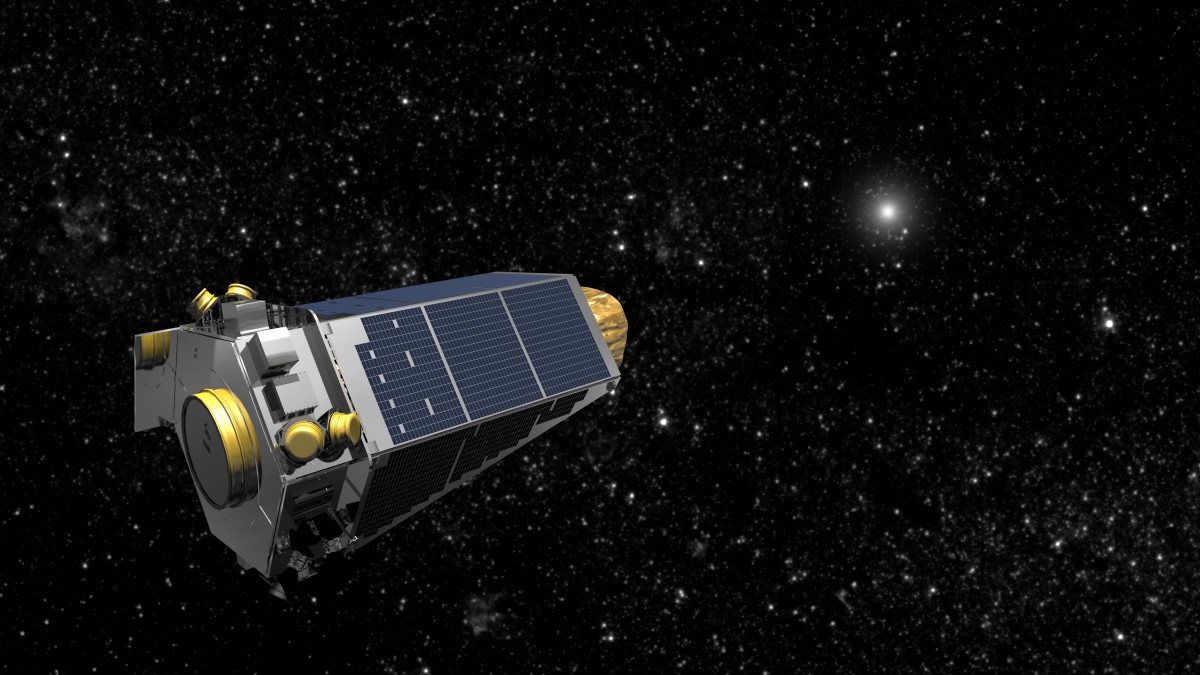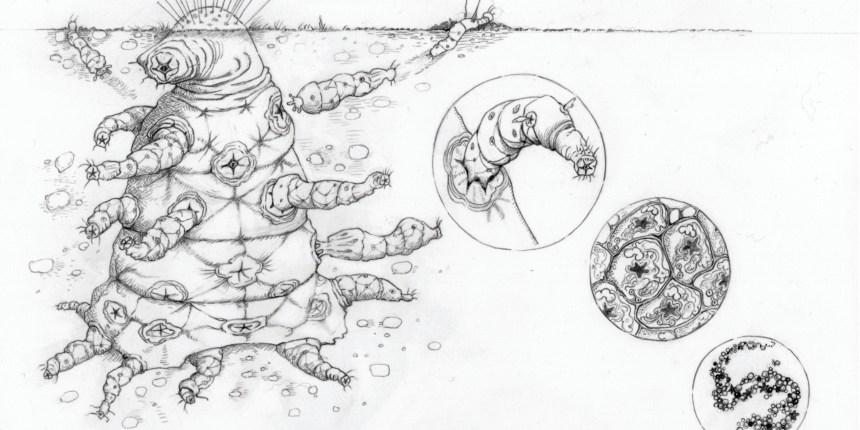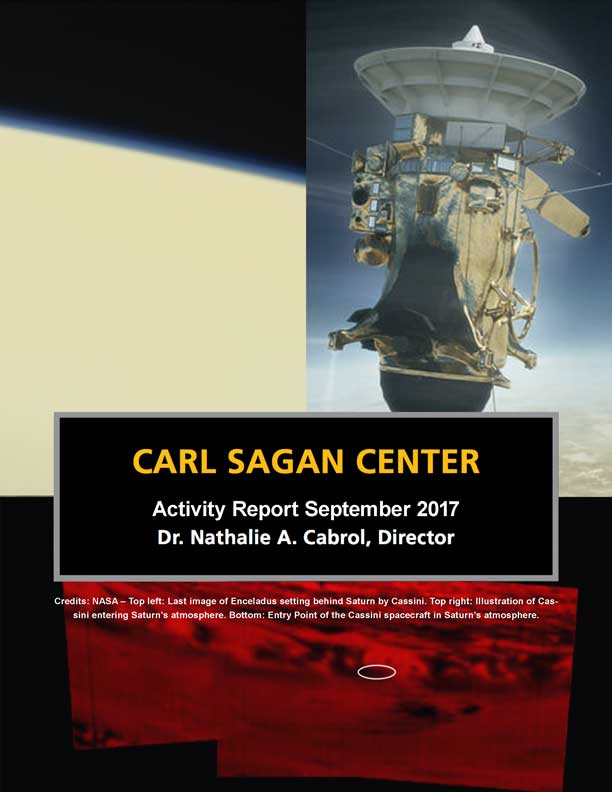
The SETI Institute is hosting a naming campaign for New Horizons’ next flyby target, known as MU69. When people visit the website, frontierworlds.seti.org, they have the opportunity to nominate possible nicknames for the object, vote, and track the status of the various nickname suggestions. Submissions will close on December 1, 2017 and a nickname will be announced early next year.
SETI Institute scientist Mark Showalter is leading the Frontier Worlds project, having previously led the Our Pluto naming campaign which invited the public to suggest names for features on the surfaces of Pluto and one of its moons, Charon. The International Astronomical Union (IAU) has the final say about the names of planetary bodies and their surface features – Mark is currently working to obtain formal approval of some of the names from the Our Pluto campaign.
For now, New Frontiers suggestions for MU69 will be considered for the object’s nickname. Once the flyby is completed, and more information is known about the object, the New Horizons team will propose a formal name to the IAU.
- SETI.org: Do You Have the Perfect Nickname for New Horizons’ Next Flyby Target?
- NASA.gov: Help Nickname New Horizons’ Next Flyby Target
- GeekWire: Help NASA and New Horizons Nickname the Icy World They’re Targeting After Pluto
- Popular Science: Here’s the Weird Alphabet Soup That Scientists use to Name Stuff in Space
- Geek.com: NASA Bravely Invites Public to Name New Horizons’ Flyby Target
- Big Think: NASA Invites You to Nickname a Mysterious Distant Object
- Space Coast Daily: NASA Looking for Help to Nickname New Horizons Mission’s Next Flyby Target
- C/Net: NASA Spacecraft’s Next Flyby Target Needs a Cool Nickname
- Mashable: Please Don’t Make NASA Name This Faraway Object Something Stupid
- Inverse: NASA Wants to Rename This Incredibly ‘Nice’ Space Rock, But it Shouldn’t
- Huffington Post UK: NASA Wants Us to Name a New Space Object, What Could Possibly Go Wrong
- Newsweek: NASA Wants Your Help Naming New Horizons’ Next Destination
- International Business Times: NASA Wants Your Help to Nickname a Distant World in Kuiper Belt
- WLOX: NASA Wants Your Help with Naming a Space Rock
- News 6 Orlando: New Horizons Next Flyby Object Needs a Nickname; Anything Better than MU69
- EarthSky: Nickname New Horizons’ Next Target
- The Verge: Someone Please Help NASA Come Up with a Better Name for New Horizons’ Next Space Target
- Space.com: You Can Give New Horizons’ Next Flyby Target a (Temporary) Name
- Astronomy Magazine: You Can Name New Horizons’ Next Target
 Hart District Airborne Astronomy Ambassador Science Teachers Fly on NASA’s SOFIA
Hart District Airborne Astronomy Ambassador Science Teachers Fly on NASA’s SOFIAThe Airborne Astronomy Ambassadors (AAA) program is a professional development experience that helps high school science teachers bring astronomy into their classrooms. Through webinars, workshops and online learning modules, the teachers are prepared for flights onboard NASA’s Stratospheric Observatory for Infrared Astronomy (SOFIA). The SOFIA flight week is an immersive STEM (Science, Technology, Engineering, and Mathematics) experience at NASA’s research facility in Palmdale, Calif. Following training and flight week, the AAA teachers implement related science curricula in their classrooms. AAA evaluators measure enhancement of student learning and STEM engagement resulting from this new science curricula that emphasizes real-world science.
Teachers from California’s Hart District were among those who participated in flights on SOFIA during October. On this particular flight, the telescope found Neptune to calibrate”. I think what is intended is “the telescope zeroed in on Neptune for calibration purposes, and then proceeded to study stars at 100 light-years’ distance from Earth.
- SETI.org: SETI Institute Announces 2017 and 2018 Educators for the Airborne Astronomy Ambassadors Program Aboard NASA’s SOFIA Flying Observatory
- KHTS: Hart District Science Teachers Recently Flew on a NASA Mission, Officials Said
- The Signal: Hart District Teachers Fly on NASA Mission
 The Unistellar eVscope Promises to Change the Way We Look at the Night Sky
The Unistellar eVscope Promises to Change the Way We Look at the Night SkyThe Unistellar eVscope, which uses optics and electronics to deliver a crisp, clean, clear view of objects in the night sky to the telescope’s eyepiece in real time. Anyone, even people not familiar with observing the sky, and even people living near city lights, will be able to see nebulas, asteroids, meteor showers and far away galaxies. The telescope will be available in late 2018 (and through a crowdfunding campaign that will run until November 23) will be wi-fi enabled so users can share their observations. Unistellar and the SETI Institute have partnered so that researchers can request observations of objects from different parts of the world.
- SETI .org: SETI Institute-Unistellar Partnership Promises to Revolutionize Amateur Astronomy
- SETI.org: Unistellar Telescope Successfully Finds, Images Asteroid Florence
- SETI.org: Seeing Pluto with Your Own Eyes from Your Backyard with Unistellar’s eVscope
- Travel+Leisure: This Revolutionary New Telescope Will Let You See Distant Galaxies from Your Own Backyard
- Space Daily: Unistellar: Response to eVscope Confirms Interest in Citizen Science
 Neptune’s Rogue Moon Triton
Neptune’s Rogue Moon TritonThe moons of Neptune are a little different than those of other gas giant planets Jupiter, Saturn and Uranus. The former three planets have a number of small moons each, all of which orbit their planet in the same direction in which it spins. In Neptune’s case, several of its moons adhere to this pattern, while Triton orbits in the opposite direction. The theory is that Neptune’s moons did, in fact, behave like moons around the other gas planets, but when Triton collided into Neptune’s moon system, it disrupted the system’s behavior.
SETI Institute scientist Matija Cuk commented in New Scientist about the composition of Triton:
“Now that we have some hold on what the original moons of Neptune were like, that can give us some clue as to what we should expect for extrasolar planets of that type. Triton is kind of a Frankenstein’s monster moon. Most of it is this original captured object, but if this research is correct then about 10 per cent of Triton comes from crashing into and absorbing these original moons.”
 Kepler
KeplerThe final Kepler survey mission catalog was released last June, but the news that emerged from it is still being reviewed in the press. SETI Institute scientist Susan Thomson is the lead author of the catalog study which identified thousands of confirmed and candidate exoplanets, several of which have the possibility of hosting life.
Kepler, now on its K2 mission, continues to survey objects in space, including supernovas, baby stars, comets and red dwarf stars, which are smaller and cooler than Earth’s Sun.
- SETI.org: Kepler’s Final Survey Catalog
- Independent: NASA Has Discovered Hundreds of Potential New Planets – and 10 May be Like Earth
 What Would E.T. Look Like?
What Would E.T. Look Like?SETI Institute Senior Astronomer and host the Big Picture Science radio program and podcast Seth Shostak speculated for NBC News what aliens could look like, according to evolutionary biology.” Replace with “Seth Shostak, SETI Institute Senior Astronomer and host of radio program “Big Picture Science,” speculated on what aliens could look like for NBC News.
A more productive approach might be to consider the mechanisms of what biologists call convergent evolution: similar environmental circumstances usually lead to similar evolutionary forms. If we assume that the rise of diverse plant and animal life requires the presence of liquid oceans, thick atmospheres, and the occasional land mass, then these stage props inevitably shape the action. Seth Shostak, NBC News
Seth considered, in part, a recent paper, “Darwin’s Aliens,” published in the International Journal of Astrobiology.
- NBC News: Here’s What E.T. Could Actually Look Like
- The Economic Times: Search for Extraterrestrial Intelligence: Coping with Alienation
 Jill Tarter: Alien Hunter
Jill Tarter: Alien HunterSarah Scoles’ recent book, Making Contact: Jill Tarter and the Search for Extraterrestrial Intelligence, explored not just Jill’s pioneering work, but the history and future of SETI research. Sarah noted in a recent talk that although we haven’t yet detected extraterrestrial intelligence, we are learning more and more about how life might thrive in extreme environments, as well as identifying more and more potential exoplanet habitats in space.
“'There are other examples of extreme life that we’ve found in very iron rich deposits in mines and very acidic lakes or very salty seas and even in the radioactive pools around nuclear plants,' she continued. 'Just basically anywhere that is on Earth there is some life that has found some kind of way to survive there which suggests to me and to some scientists that there are a lot more places in the universe – not just on Earth – that might be habitable that we thought as super unfriendly in the past.'
Along with extreme life, there is the discovery of hundreds of planets outside the solar system in the universe which would possibly support life.
'They orbit basically every star,' Scoles said. 'There’s a lot of planets with ground, we might call them rocky planets, so somewhere an alien being wouldn’t have to be floating in Jupiter-style gas. It could build a house or whatever aliens have. Given that life here can survive any number of places that seem very bad to us, and that there are all of these planets out there where there could be all kinds of conditions that we might have thought of as bad, but maybe a tardigrade or an alien like tardigrade would like just fine.'” Sarah Scoles, The Pocahontas Times
- The Pocahontas Times: Scoles Book Signing at GBO
- Space.com: ‘Making Contact’ Profiles Pioneering Alien Hunter Jill Tarter
- Astronomy Magazine: 5 Questions with David J. Eicher: Episode 12 – Jill Tarter
 SETI Institute Activity Report October 2017
SETI Institute Activity Report October 2017SETI Institute is a world-class center of scientific research. But that’s not all we do. In addition to the Carl Sagan Center for Research, our Center for Education and Center for Outreach work to share knowledge and learning with all humanity. The Center for Education promotes STEM education that teaches and excites children, young adults and educators, while the Center for Outreach engages with the general public through a variety of digital, print and in-person initiatives. This newly expanded activity report covers all work of the SETI Institute to provide a more holistic overview of the impact of our work.
You can download the whole October 2017 activity report here.
 Big Picture Science
Big Picture ScienceLast week DNA: Nature’s Hard Drive looked at the potential for biotech and tools such as CRISPR. This week, Skeptic Check: Nibiru! (Again!) wonders why we’re so willing to believe hoaxes and alarmist end-of-world scenarios.
Last week Seth Shostak talked with SETI Institute scientist Lori Fenton about Martian sands.
All past Facebook Live videos can be seen on the SETI Institute’s Facebook page at https://www.facebook.com/SETIInstitute/.
- SETI Talks: November 29, Menlo Park, CA Featuring Jeff Coughlin and Geert Berentsen and a discussion of the Kepler and K2 missions.
- Astronomy Society of the Pacific: December 5-8, St. Louis, MO Pamela Harman will speak.
- American Geophysical Union: December 11-15, New Orleans, LA SETI Institute Scientist Matt Tiscareno will present research on the planetary rings of Saturn and the Cassini mission. Other SETI Institute scientists participating will include Nathalie Cabrol, Franck Marchis, and Pamela Harman.
- American Astronomical Society: January 8-12, Washington, DC SETI Institute scientists and staff will participate.
- Consumer Electronics Show: January 9-12, Las Vegas, NV Franck Marchis will participate





